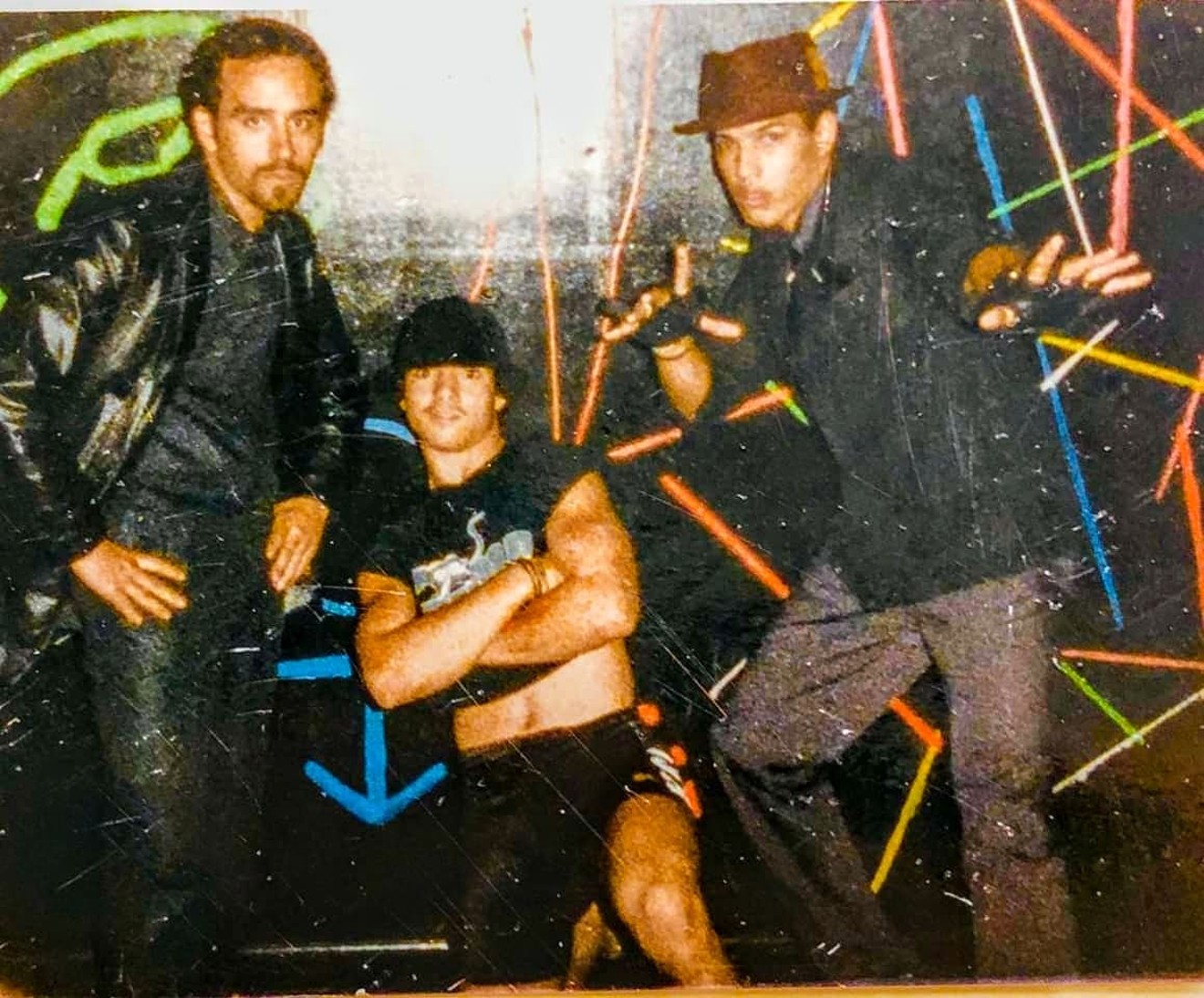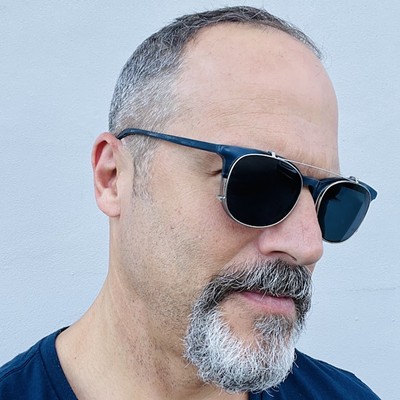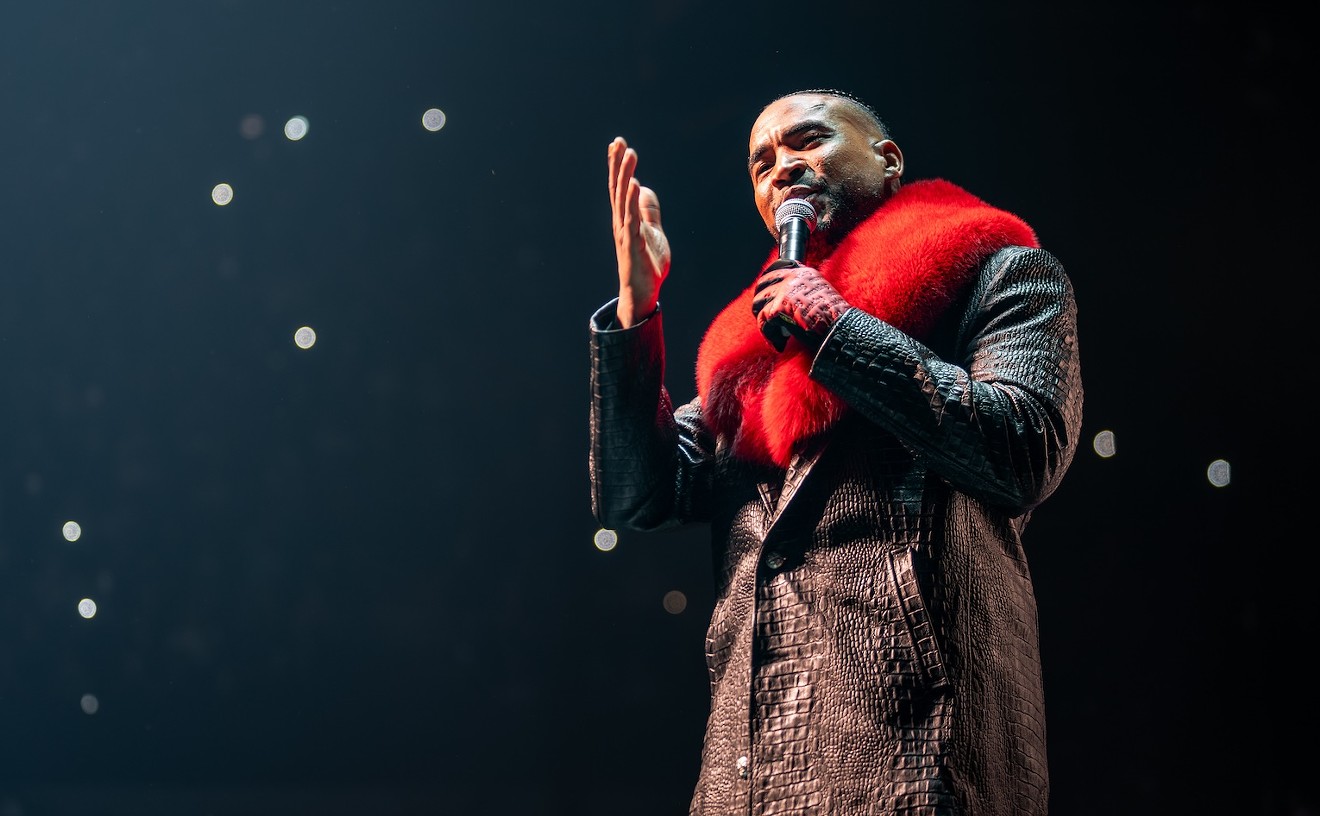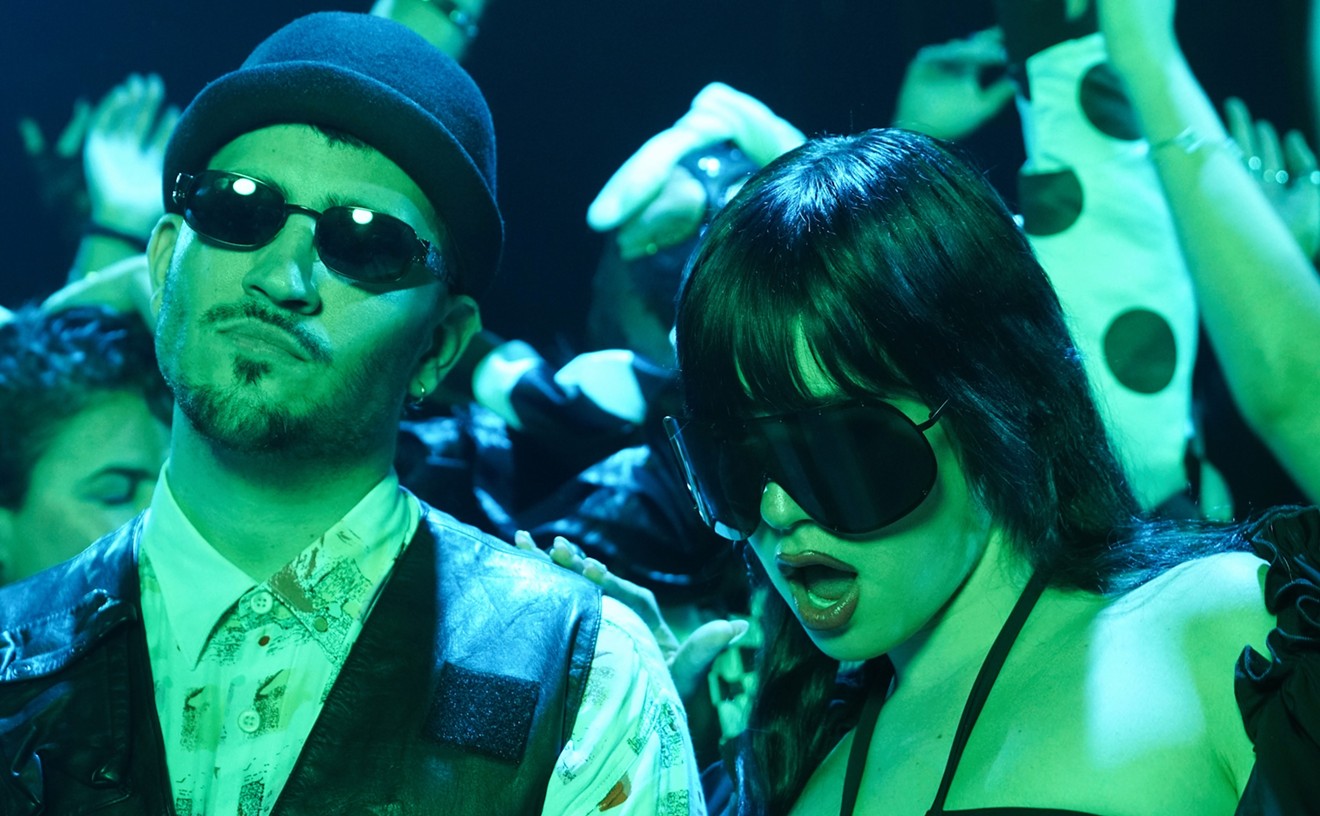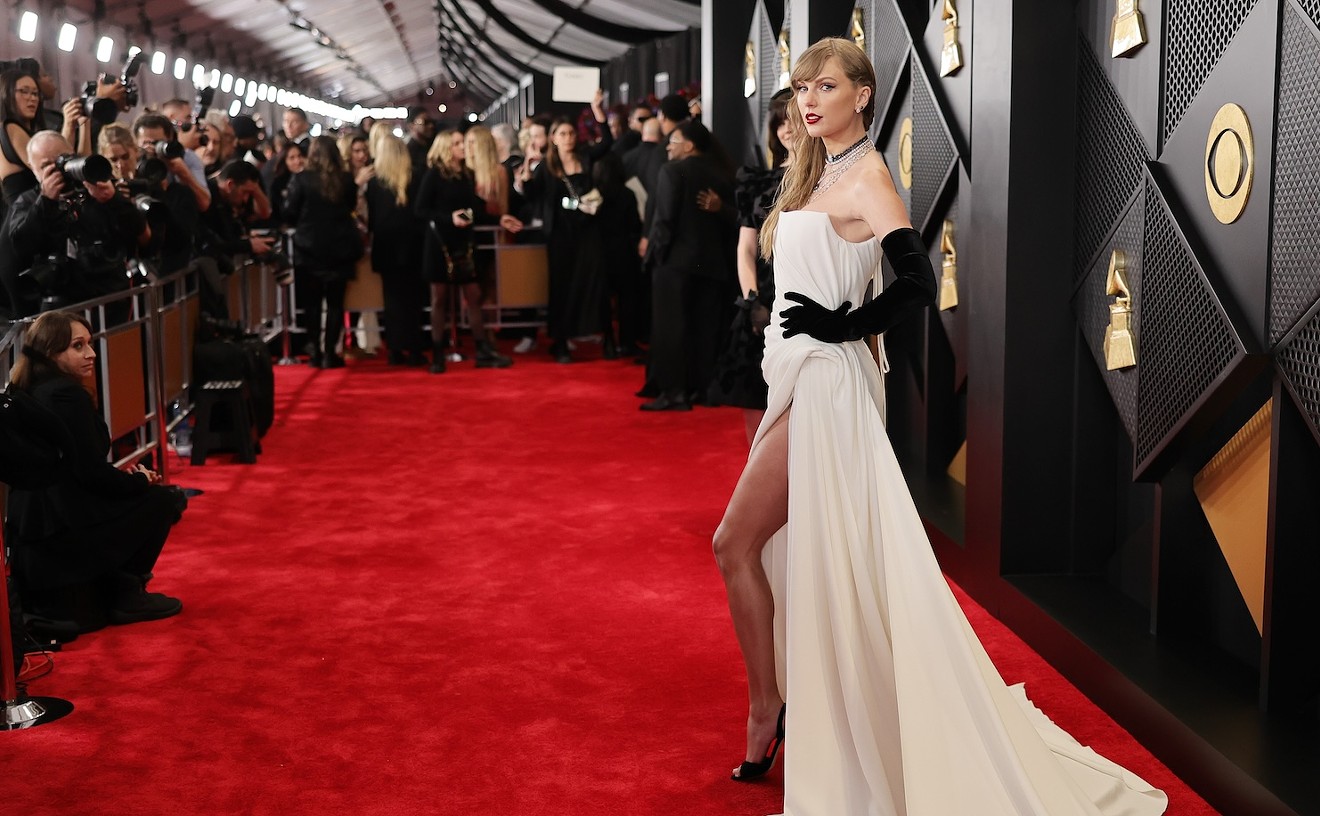When Mohamed Moretta read New Times' recent story remembering the Beat Club, a strip-mall hot spot in Westchester that once hosted big-name acts such as Gloria Gaynor and Exposé, he noticed something was missing: himself.
Moretta, who has built a successful music career as a DJ, music producer, and promoter, was a fundamental part of the Beat Club during its existence from 1983 to 1985. His Friday hip-hop nights there drew major talent like Run-D.M.C. and helped boost the careers of local talent as well. The way he remembers it, the Beat Club was the vessel on which Miami's hip-hop culture embarked.
“What people saw at the Beat Club on Friday nights was just kids dancing at my house who later would head to the Beat to dance,” says Moretta, who has worked with the likes of Kool & the Gang, Phil Collins, and Gloria Estefan.
At that time, Moretta was renting a three-bedroom house in Kendall. “My little brother, Gus Rodriguez, also known as TK Rodriguez, lived with me at the time. He was the first Spanish rapper of all time, period," Moretta claims. "Nobody can dispute that. He walks in a room; if you are a rapper, you leave. I saw him battle Ice-T, and Ice-T was like, ‘Dude, I bow down.’"
Rodriguez was just one of many hip-hop talents who landed at Moretta's place. Dancer Oz Rock, AKA Adolph Alvarez, was another. Alvarez starred in a 1984 Mountain Dew commercial that is considered by some to be the first major commercial to show break dancing. "Oz was our protégé," Moretta remembers.
“There was this kid named Flex who was huge in the community in terms of dancing,” Moretta continues. MC Flex had previously been a member of the Floor Masters, a pioneering b-boy group from the Bronx that later changed its name to the NY City Breakers and would appear in the 1984 hip-hop film Beat Street.
But the real catalyst was Kid Freeze from the Bronx. “He lived at my house. He was the first kid to spin on his head in front of audiences around the world," Moretta recalls. "He did a show called That’s Incredible.”
TK Rodriguez remembers it well. He had just graduated from the University of Miami when he moved in with Moretta. “At the time, break dancing was taking off, and we happened to have in the house what was considered to be the greatest break dancer in history at that moment. All of a sudden, Kid Freeze is living in the house.” Rodriguez says every break dancer in Florida wanted to be around and learn from Kid Freeze, whose legal name is Clemente Moreno and is credited for inventing several break-dancing moves, including the continuous head spin.
“We start having all of these dancers, rappers. We were kind of a magnet for everybody that had a talent that was in this, because up until then, there really wasn’t anyone else that was exploiting this particular genre,” Rodriguez says.
New Yorkers saw South Florida as fertile ground for hip-hop to succeed.
“There were a group of us who discovered that Florida is a great place to hang out. The weather is awesome. We could be out there doing what we do, and we could be in a struggle but not struggle so hard,” says Rodriguez, who’s from Brooklyn.
At the time, Moretta says, the term "hip-hop" didn’t yet exist in the vernacular of South Florida pop culture. “We were b-boys and b-girls. I identified with the street because I’m a street kid,” says Moretta, who moved to Miami in 1979 after DJ'ing for several years in Haiti.
“It was this new thing that was coming together, and the crowd was kids from high schools,” recalls Frank Mercado-Valdes, a Friday-night Beat Club regular. “They weren’t drawing from Liberty City, Allapattah, or Carol City. They were drawing from the southern part of Dade — the blacks and Latinos, the Caribbean — and the mindset was slightly more optimistic, and Mohamed was their guy,” says Mercado-Valdes, who later would become executive producer of Showtime at the Apollo.
Moretta says it was a simple transition when the Beat Club called. “I told [the owners] I could do Fridays because I understood that culture and was helping to build it.”
“It was a perfect fit,” says Carlos Menendez, who covered Saturday and Sunday nights as a headline DJ and was close to the club’s owners. “I knew Mo from around, and he was tapped into that hip-hop culture and knew a lot of the kids.”
Before the Beat Club existed, fans of rap music congregated at local arcades and entertainment venues such as Castle Park, Video Powerhouse, or any number of skating rinks in South Florida. Then word spread that a new teen club in Westchester was catering to this crowd.
Ricky “Speedy Legs” Fernandez traveled from Hialeah to Westchester every Friday night. “It was the only hip-hop club in Miami that was rocking it Bronx-style. When the Beat Club started bringing down acts like Jazzy Jay, Mantronix, Run-D.M.C., UTFO, all these groups, it just outdid every other place in Miami.”
Rob “Mighty Rock” Gonzalez was a 19-year-old rapper who had just arrived from New York when he heard by word of mouth about the club. “I saw Run-D.M.C., T La Rock, MC Globe, and DJ Whiz. I opened up for T La Rock,” he says. “The Beat Club jump-started hip-hop. It was the only club [in South Florida] at the time where we could experience the culture.”
“What I loved about the place was its dance floor,” Speedy Legs Fernandez recalls. “It had a really smooth dance floor.” He says the shellacked surface was ideal for battling other break-dancing crews. “We were from the group TDK (the Devastating Kids). Our rivals at the Beat Club that we used to battle every weekend were the Street Masters. We battled them all the time.”
The Street Masters, led by Kid Freeze, were managed by Mohamed Moretta. “These guys [living in my house] weren’t going to school,” Moretta says, adding that organizing the Street Masters was an opportunity for the kids to make some money. They appeared in Burdines fashion shows, opened the 1984 Miss Universe Pageant in Miami, and had cameos in the b-boy cult-favorite flick Knights of the City, which was executive-produced by the business-savvy former Colombo family underboss Michael Franzese.
Mercado-Valdes, who grew up in the Bronx, didn’t break dance, but he certainly appreciated what he saw at the Beat Club. “That kind of dancing was more a competitive show of athleticism and artistry. It was like a warriors showdown, a throwdown. That’s what break dancing was really for. The whole purpose, if you understand hip-hop, it began among the gangs in the South Bronx, among people who needed the ability to show aggression or show cohesiveness without fighting each other.”
“The Beat Club was the place on those Friday nights where hip-hop would be branded in South Florida,” TK Rodriguez says. “Up until that moment, hip-hop was happening in spurts. Yeah, Oz Rock was going into Overtown and Liberty City on a Saturday night, spinning on his head, but nobody in the mainstream went into the business of hip-hop until the Beat Club.”
Early rap record labels, eager to expand outside of New York, took notice at the possibility of breaking into a new market in South Florida. “The first record ever made and released on Def Jam Records, I played it,” Moretta says. “White label, test pressing — 'I Need a Beat' by LL Cool J. That is powerful stuff. That is history on another level. I played that at the Beat Club. I was the Jewish kid dealing with the Tom Silvermans [of Tommy Boy Records] of the world.”
Moretta was a natural-born leader for the early hip-hop movement in Miami. “My ethnicity is crazy," he says. "I’m Dominican, Haitian, and Italian, born Jewish with an Arabic first name and an Italian last name. I speak five languages and understand seven.”
Mercado-Valdes says of Moretta: “He was, in many ways, to guys like me, the ideal conglomeration of that blend of Miami. He kind of had that crowd of people to which the blending of race and culture was important.”
Adds TK Rodriguez: “Mo had this incredible presence, and it was one of those moments where I said, 'Wow, this guy, he would really drive this crowd up a wall,' because he was very good at that.”
Friday nights at the Beat Club offered MC battles, break-dance battles, live performances, and graffiti artists. “That was the other part that was cool. At that time, New York subways were all full of graffiti, so that part of the culture also came. You had guys painting on the walls while people were there dancing. They would paint things instantly, and out of nowhere you would see a work of art,” Mercado-Valdes says.
“The Beat Club was the first one to say, 'Listen, our business on Friday nights is going to be [hip-hop], and we are going to stay true to this,'” TK Rodriguez says. “And that’s the audience that showed up.”
At the time, mainstream radio wasn’t playing rap. “They may be dropping a song in there, but they are not embracing the whole moniker of hip-hop," TK Rodriguez says. "That audience, when they showed up [at the Beat Club], became the genesis where you would have people [from radio stations] like WEDR start saying, 'Hmmm, there is something here that we’re kind of missing out on.'”
But the club's owners couldn’t sustain the momentum. By the time the Beat Club closed in 1985, its talented regulars went their separate ways. Moretta took his talents and crowd to Kendall. He became the resident DJ at Skylite Express in the new shopping center Town & Country and under a single roof brought the Miami hip-hop and freestyle crowds together. “The momentum we got at the Beat Club allowed us to take it to the next level,” says Moretta, who went on to work as an on-air personality at Power 96 (WPOW) and 99 Jamz (WEDR).
By then, hip-hop was an established music genre and culture in Miami’s musical fabric. And for anyone living in the vicinity of Westchester, it all came together at the Beat Club.
“Other clubs came after the Beat Club, but the Beat is the original and legendary. It gave us Miami artists a platform,” Mighty Rock Gonzalez says.
“Listen, I would go to other clubs, all these Fort Lauderdale clubs,” Speedy Legs Fernandez says, “but the Beat Club was more the home ground. It was the ultimate hip-hop joint, period.”
[
{
"name": "Air - MediumRectangle - Inline Content - Mobile Display Size",
"component": "19274298",
"insertPoint": "2",
"requiredCountToDisplay": "2"
},{
"name": "Editor Picks",
"component": "17482312",
"insertPoint": "4",
"requiredCountToDisplay": "1"
},{
"name": "Inline Links",
"component": "18711090",
"insertPoint": "8th",
"startingPoint": 8,
"requiredCountToDisplay": "7",
"maxInsertions": 25
},{
"name": "Air - MediumRectangle - Combo - Inline Content",
"component": "17482310",
"insertPoint": "8th",
"startingPoint": 8,
"requiredCountToDisplay": "7",
"maxInsertions": 25
},{
"name": "Inline Links",
"component": "18711090",
"insertPoint": "8th",
"startingPoint": 12,
"requiredCountToDisplay": "11",
"maxInsertions": 25
},{
"name": "Air - Leaderboard Tower - Combo - Inline Content",
"component": "17482313",
"insertPoint": "8th",
"startingPoint": 12,
"requiredCountToDisplay": "11",
"maxInsertions": 25
}
]

